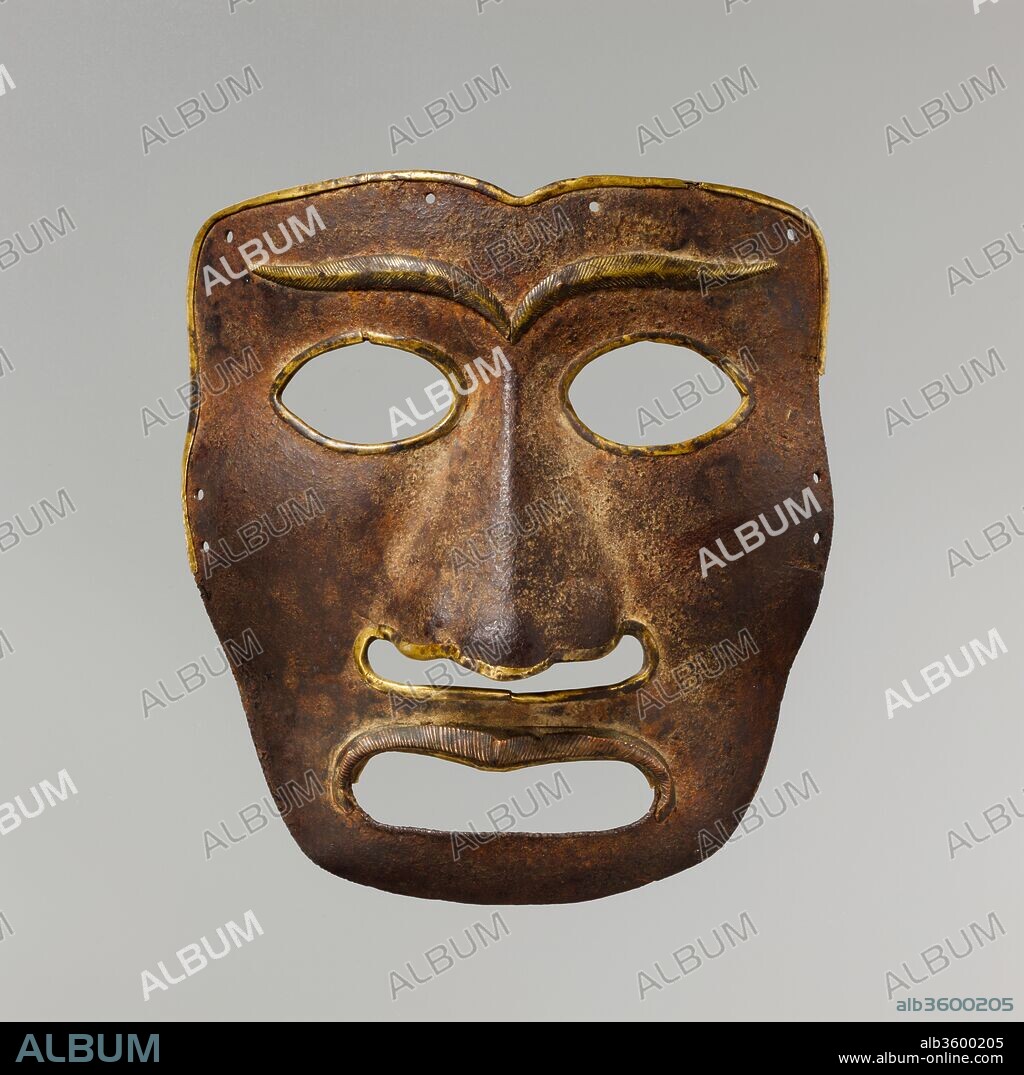alb3600205
War Mask

|
Ajouter à une autre Lightbox |
|
Ajouter à une autre Lightbox |



Avez-vous déjà un compte? S'identifier
Vous n'avez pas de compte ? S'inscrire
Acheter cette image.
Sélectionnez l'usage:

Titre:
War Mask
Légende:
Traduction automatique: Masque de guerre. Culture : mongole ou tibétaine. Dimensions : 6 ½ x 5 ¾ in. (16,5 x 14,6 cm). Épaisseur : joues entre 1,3 et 1,5 mm sur les deux joues. Centre du front, 1,7 mm Pointe du nez, 1,2 mm. Crête du nez, 1,8 mm L'anneau exposé était de 1 mm à tous les points vérifiés. Tous les autres échantillons autour du visage étaient d'environ 1,5 mm.. Date : 12ème-14ème siècle. Les masques utilisés dans les danses rituelles et autres cérémonies sont bien connus au Tibet et en Mongolie et étaient fabriqués à partir de papier mâché, de cuir ou de cuivre doré. Ce masque est cependant exceptionnellement rare, car il a été fait de fer pour être utilisé au combat, et est l'un des deux seuls masques connus de ce type avec des caractéristiques distinctement mongoles ou tibétaines. Les masques de guerre en bronze et en argent étaient utilisés pendant l'Empire romain et dans l'ancien Proche-Orient. Des masques de guerre en fer datant du Xe au XIIIe siècle sont connus du sud de l'Ukraine et de la Russie, de l'Iran du XIIIe au XVIe siècle et du Japon où ils furent portés par les guerriers samouraïs du XVe au XIXe siècle. Cet exemple fournit un lien unique en Asie centrale dans l'utilisation des masques de guerre des steppes occidentales de l'Europe aux confins orientaux de l'Asie.
War Mask. Culture: Mongolian or Tibetan. Dimensions: 6 ½ x 5 ¾ in. (16.5 x 14.6 cm).
Thickness:
Cheeks between 1.3-1.5mm on both cheeks.
Center of forehead, 1.7mm
Tip of nose, 1.2mm.
Ridge of nose, 1.8mm
The exposed ring was 1mm at all point checked.
All other samples from around the face were about 1.5mm.. Date: 12th-14th century.
Masks for use in ritual dances and other ceremonies are well known in Tibet and Mongolia, and were made from papier-mâché, leather, or gilt copper. This mask is exceptionally rare, however, because it was made of iron for use in battle, and is one of only two known masks of this type with distinctly Mongolian or Tibetan features. Bronze and silver war masks were used during the Roman Empire and in the Ancient Near East. Iron war masks dating from the 10th to 13th century are known from southern Ukraine and Russia, from Iran during the 13th century to the16th century, and Japan, where they were worn by Samurai warriors from the 15th to the 19th century. This example provides a unique Central Asian link in the use of war masks from the western steppes of Europe to the eastern edges of Asia.
Technique/matériel:
Iron, copper alloy
Musée:
Metropolitan Museum of Art, New York, USA
Crédit:
Album / Metropolitan Museum of Art, NY
Autorisations:
Modèle: Non - Propriété: Non
Questions sur les droits?
Questions sur les droits?
Taille de l'image:
4200 x 4192 px | 50.4 MB
Taille d'impression:
35.6 x 35.5 cm | 14.0 x 14.0 in (300 dpi)
Mots clés:
 Pinterest
Pinterest Twitter
Twitter Facebook
Facebook Copier le lien
Copier le lien Email
Email
